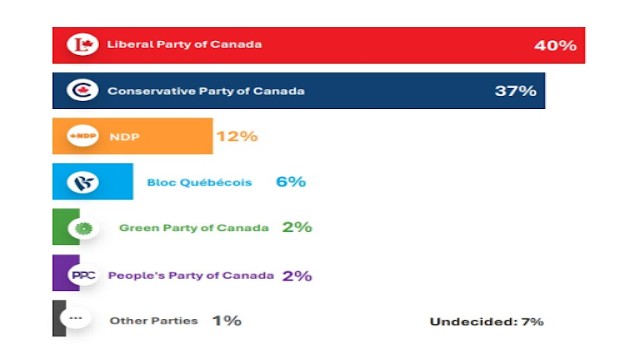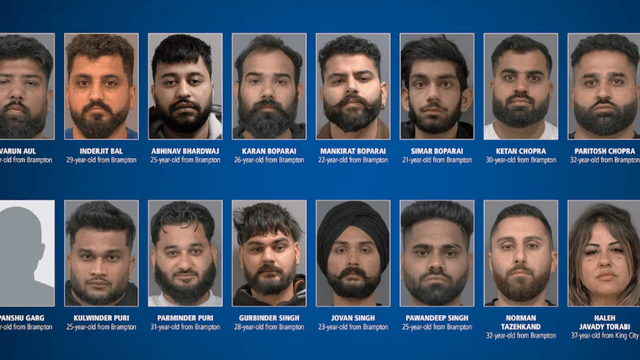
A Leger poll shows the federal election is a close contest between the Liberals and the Conservatives.Toronto City News
The Liberal Party is holding a solid lead in the polls, with 48% of support compared to the Conservatives’ 36%. Although the Liberals are still ahead by 12 points, their lead has slightly narrowed over the past two days. However, this small shift does not threaten their dominant position.
Liberal Strength Across Key Regions
The Liberals maintain strong support in major provinces, particularly Ontario and Quebec. Their growing influence in British Columbia and Alberta further strengthens their advantage. Interestingly, Conservative support seems to be rising in Atlantic Canada, which could be a trend to watch in the coming days.
Shift in Voter Loyalty
The Liberal surge comes from gaining support from moderate Conservatives and centrist voters who previously backed the Conservatives. The party has also pulled in voters from the NDP and the Bloc Québécois, especially in Quebec, where the Liberal gains have hurt the Bloc’s standing.
Demographic Edge
The Liberals are attracting a broad range of voters. They are particularly popular among women, people over 50, and university-educated individuals. The party also enjoys more support from middle- and upper-class voters.
Emotional Engagement Driving Liberal Surge
The growing support for the Liberals appears to be fueled by a deep emotional connection to national identity and sovereignty. This emotional attachment could increase voter turnout and make the Liberal advantage more stable. The rapid and intense rise in Liberal backing suggests that this is more than just a temporary trend.
Challenges for the Conservatives
The Conservatives face a tough road ahead. As the Liberals consolidate more progressive and centrist support, it becomes harder for the Conservatives to regain their footing. The emotional connection driving Liberal loyalty could make it even more difficult for the Conservatives or other parties to sway voters.
Survey Details
The survey was conducted between March 23 and 25, 2025, using Interactive Voice Response (IVR) technology. It involved 1,093 Canadian adults. The margin of error is ±3 percentage points, 19 times out of 20.
A five-day roll-up survey, conducted from March 21 to 25, 2025, included 1,621 adults. This survey has a margin of error of ±2.4 percentage points, 19 times out of 20.
The survey reached landline and cellphone users, including cellphone-only households, ensuring a diverse sample. The results were statistically weighted by age, gender, and region to reflect Canada’s population. COVID-19 vaccine uptake was also factored in to represent those less likely to participate in surveys.















